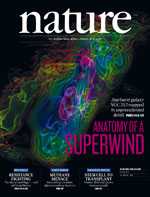Nature:H7N9病毒通过识别唾液酸受体更易感染人
2013-07-27 唐凤 科学网
大量生物特征表明,H7N9禽流感病毒对人类已构成重大威胁。最近,中国疾病预防控制中心病毒病预防控制所国家流感中心主任舒跃龙所带领的团队对H7N9的生物学特点进行了系统研究,相关研究成果发表在7月4日出版的《自然》杂志上。 “这些研究成果进一步说明H7N9病毒对人类健康可能产生的威胁,以及对该病毒进一步开展研究,加强对病毒流行和变异的监测是十分必要的。”舒跃龙在接受《中国科学报》记者采访时表示。
大量生物特征表明,H7N9禽流感病毒对人类已构成重大威胁。最近,中国疾病预防控制中心病毒病预防控制所国家流感中心主任舒跃龙所带领的团队对H7N9的生物学特点进行了系统研究,相关研究成果发表在7月4日出版的《自然》杂志上。
“这些研究成果进一步说明H7N9病毒对人类健康可能产生的威胁,以及对该病毒进一步开展研究,加强对病毒流行和变异的监测是十分必要的。”舒跃龙在接受《中国科学报》记者采访时表示。
2013年3月,一种新型重配的H7N9禽流感病毒在我国长三角地区被首先发现,截至7月1日,共造成132人感染,其中死亡39例。对于一种新发病原,很多科学问题还亟须回答,例如该病毒到底是如何起源的、为什么会感染人、能不能造成流感大流行等。
舒跃龙研究小组发现,该新型禽流感病毒能识别α2,3糖苷键连接的唾液酸受体(禽流感病毒受体)和α2, 6糖苷键连接的唾液酸受体(人流感病毒受体)。从而导致该病毒较H5N1禽流感病毒更容易感染人。并且该病毒可以在人的气管和肺组织有效复制,但在肺部组织的复制效率远高于气管组织。“这种复制效率的差异可能是目前该病毒不能造成有效人际传播的原因。”舒跃龙说。
研究显示,受H7N9感染的患者会出现异常高的炎症和免疫细胞水平。这个俗称“细胞因子风暴”的现象,可能是导致病情加剧的真正元凶。
另外,针对H7N9禽流感病毒人群没有交叉免疫抗体,及由此导致的普遍易感性,舒跃龙指出:“目前的季节性流感疫苗不能提供对该病毒的保护,因此对该病毒开展疫苗研究是十分必要的。”
英文摘要:

Nature doi:10.1038/nature12379
Biological features of novel avian influenza A (H7N9) virus
Jiangfang Zhou,Dayan Wang, Rongbao Gao,Baihui Zhao,Jingdong Song,Xian Qi,Yanjun Zhang,Yonglin Shi, Lei Yang, Wenfei Zhu, Tian Bai, Kun Qin, Yu Lan,Shumei Zou,Junfeng Guo,Jie Dong,Libo Dong,Ye Zhang,Hejiang Wei,Xiaodan Li,Jian Lu,Liqi Liu,Xiang Zhao, Xiyan Li,Weijuan Huang et al.
Human infection associated with a novel reassortant avian influenza H7N9 virus has recently been identified in China. A total of 132 confirmed cases and 39 deaths have been reported. Most patients presented with severe pneumonia and acute respiratory distress syndrome. Although the first epidemic has subsided, the presence of a natural reservoir and the disease severity highlight the need to evaluate its risk on human public health and to understand the possible pathogenesis mechanism. Here we show that the emerging H7N9 avian influenza virus poses a potentially high risk to humans. We discover that the H7N9 virus can bind to both avian-type (α2,3-linked sialic acid) and human-type (α2,6-linked sialic acid) receptors. It can invade epithelial cells in the human lower respiratory tract and type II pneumonocytes in alveoli, and replicated efficiently in ex vivo lung and trachea explant culture and several mammalian cell lines. In acute serum samples of H7N9-infected patients, increased levels of the chemokines and cytokines IP-10, MIG, MIP-1β, MCP-1, IL-6, IL-8 and IFN-α were detected. We note that the human population is naive to the H7N9 virus, and current seasonal vaccination could not provide protection.
(责任编辑:caoli)
本网站所有内容来源注明为“梅斯医学”或“MedSci原创”的文字、图片和音视频资料,版权均属于梅斯医学所有。非经授权,任何媒体、网站或个人不得转载,授权转载时须注明来源为“梅斯医学”。其它来源的文章系转载文章,或“梅斯号”自媒体发布的文章,仅系出于传递更多信息之目的,本站仅负责审核内容合规,其内容不代表本站立场,本站不负责内容的准确性和版权。如果存在侵权、或不希望被转载的媒体或个人可与我们联系,我们将立即进行删除处理。
在此留言











#Nat#
54
#唾液酸#
71
#H7N9#
62